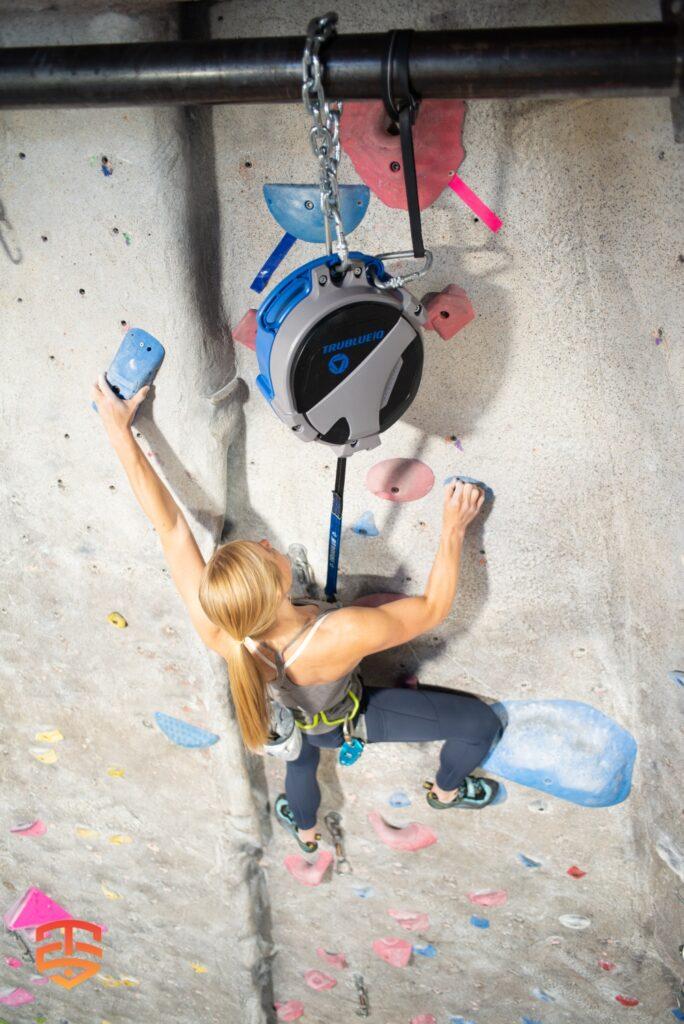
In the world of indoor rock climbing, the times are changing rapidly. As technology advances and our understanding of human performance evolves, the design of climbing gyms is poised to undergo a radical transformation. With the integration of artificial intelligence, augmented reality, advanced materials, and more, the climbing experience of the future could be vastly different from what we know today.
From smart climbing walls that adapt in real-time to the climber’s skill level, to virtual reality environments that transport climbers to the top of virtual Everest, the possibilities are vast and exciting. Imagine belaying devices that provide personalized feedback and enhance safety, or innovative materials that mimic the texture of real rock. The future of climbing gym design holds an array of exciting prospects.
This article delves into a speculative exploration of these potential future trends, envisioning how they might reshape the climbing gym industry and enhance the experience for climbers. While some of these advancements may be many years away, they offer a glimpse into a future where technology and design come together to take indoor climbing to new heights.

The future of climbing gym design is set to be an exciting fusion of technology, advanced materials, and evolving customer needs. Here’s a look at how some of these developments might reshape the industry.
One game-changing concept is the development of smart climbing walls. These walls, using a combination of artificial intelligence, sensor technology, and machine learning algorithms, could offer a personalized climbing experience. The wall could adapt its difficulty level based on the climber’s skill level, physical condition, and personal preferences. It could also provide real-time feedback, helping climbers improve their technique.
Meanwhile, virtual reality and augmented reality are poised to add a new layer of excitement and immersion to climbing. Climbers might wear VR/AR goggles to immerse themselves in a wide variety of virtual environments, from alpine peaks to Martian cliffs. Augmented reality could also project climbing routes onto the wall, providing visual assistance for planning the ascent.
The advent of new materials could revolutionize the tactile aspect of indoor climbing. These materials could mimic the feel and texture of different types of rock surfaces more closely than current ones. Alternatively, innovative materials that can change their shape or texture in response to electrical signals might be used to create a wall that can constantly reconfigure itself and present new challenges.
The concept of dynamic climbing walls may also become a reality as robotics advances. These walls could reshape themselves, simulating the unpredictability of climbing in the natural environment. This could involve moving holds or even simulating weather conditions like wind or rain.
The integration of biometric data could add another layer of personalization to climbing. Wearable technology could be used to track climbers’ heart rate, oxygen level, body temperature, and other biometric data, providing valuable information for tailoring the climbing experience and training regimen.

Sustainability is also likely to influence the design of future climbing gyms. This could mean using environmentally friendly materials in construction, implementing energy-efficient systems for heating and lighting, and integrating features like solar panels or rainwater collection systems.
Moving beyond these ideas, future gyms might incorporate interactive lighting systems that can light up the next hold or the optimal path, offering a visual guide and adding a gaming element to the climbing experience. There’s also the potential for 3D printing technology to create custom holds and walls.
Sound design could be another frontier, with advanced sound systems providing an immersive, multi-sensory climbing experience. Looking even further ahead, the incorporation of neurofeedback technology and advanced haptic feedback suits could offer climbers insights into their mental state during climbing and provide tactile feedback, respectively.
Finally, the climbing gyms of the future may become hybrid spaces that combine climbing with other forms of exercise and recreation, such as yoga, weight training, and meditation spaces. This integration could attract a wider audience and promote a more holistic approach to training.
In the future, we could also see significant advancements in automatic belaying devices. These devices, crucial for safety in indoor climbing, could become even smarter and more efficient. With the integration of advanced sensors and AI, future automatic belays could potentially detect the speed and direction of a climber, adjusting the tension and speed of the belay in real time to match the climber’s movements. This would provide a smoother, safer climbing experience, minimizing the risk of falls or sudden jerks.
Additionally, these intelligent belay systems could include features like fall detection and automatic emergency response, which would trigger an alert to the gym staff or even medical personnel if a serious incident occurs. They could also offer personalized feedback to climbers about their climbing speed, efficiency, and technique, helping them to improve their performance.
Moreover, the design of these devices could be optimized for minimal noise and visual distraction, making them less intrusive in the climbing environment. The use of advanced materials could make them lighter, quieter, and more durable, reducing maintenance requirements and improving the overall climbing experience.
The combination of enhanced safety features, real-time feedback, and improved design could revolutionize the use of automatic belays in climbing gyms, providing a safer, more engaging, and more personalized climbing experience.

While these concepts are speculative and may be many years away, they illustrate the potential for technology and design innovation to transform the climbing gym industry, enhancing the experience for climbers and opening up new possibilities for training and recreation.
A Peek into the Future of Indoor Climbing
In conclusion, the future of climbing gym design is a frontier filled with exciting possibilities. As we embrace the power of new technologies, advanced materials, and innovative design principles, we are poised to create indoor climbing experiences that are more immersive, personalized, and effective than ever before.
From smart climbing walls and virtual reality environments to innovative belay systems and hybrid gym spaces, these potential advancements promise to revolutionize the climbing gym industry. They will not only enhance the experience for climbers but could also provide powerful tools for training, health monitoring, and injury prevention.
While many of these concepts are still speculative and may take years to fully realize, they paint a picture of a future where indoor climbing is continually evolving and innovating. In this future, climbers of all skill levels can look forward to a richer, more engaging, and safer climbing experience. As we continue to push the boundaries of what is possible in climbing gym design, the sky truly is the limit.

Vertical Auto Belay systems
Grow your climbing community by providing more access to more routes for more climbers.
Auto Belay makes climbing simple and approachable, turning first-time users into return customers. TRUBLUE Auto Belays are engineered to minimize maintenance and are built to last. Our patented magnetic braking system, delivers the smoothest user experience, the highest level of reliability, and dramatically reduces device downtime.
Dive Deeper: Exploring Auto Belay Technology with Expert Insights
Auto belays are transforming the world of indoor climbing, offering convenience and safety for climbers of all levels. But how exactly do they work, and what are the key considerations for using them? To learn more about the intricacies of auto belay technology and gain valuable insights from experts in the field, check out our additional resources below…
- Comparison of Auto Belay’s: what’s new in the TRUBLUE iQ series
- Using Technology to Make Your Climbing Gym Accessible and Inclusive
- A Closer Look at the Auto Belay System
- Next Generation Auto Belay – TRUBLUE iQ
- Every modern climbing gym should have these 5 features
- Everything You Need to Know about Buying Auto Belays
- Increase Revenue and Customer Satisfaction at Family Entertainment Centers
- Catch-and-Hold: What is it and how does it work?
- Leading the Way in profitable and safe climbing
- Why Family Entertainment Centers Trust TRUBLUE Auto Belays
- Creating Value for Customers by Using an Auto Belay
- TRUBLUE iQ+ World’s first catch-and-hold auto belay
- Drive Revenue and Customer Satisfaction with Auto Belays
- 7 Ways Magnetic Braking Is Better Than Friction
- No Belayer Necessary: Understanding Auto belays
- Competitive Advantage of an Auto Belay
- ROI at Climbing Walls and Family Entertainment Centers
- Auto-Belay and hands-free climbing challenges
- Why using Auto Belays Boosts your Business
- The Science of Eddy Current Magnetic Braking
-
 TRUBLUE iQ+ | Catch & Hold Auto Belay€ 4.399,00 – € 4.599,00 Ex VAT
TRUBLUE iQ+ | Catch & Hold Auto Belay€ 4.399,00 – € 4.599,00 Ex VAT -
 TRUBLUE SPEED Auto Belay | 7,5 – 16 meter€ 2.799,00 – € 2.899,00 Ex VAT
TRUBLUE SPEED Auto Belay | 7,5 – 16 meter€ 2.799,00 – € 2.899,00 Ex VAT -
 TRUBLUE iQ Auto Belay | 4,5 – 20 meter€ 2.799,00 – € 2.999,00 Ex VAT
TRUBLUE iQ Auto Belay | 4,5 – 20 meter€ 2.799,00 – € 2.999,00 Ex VAT







